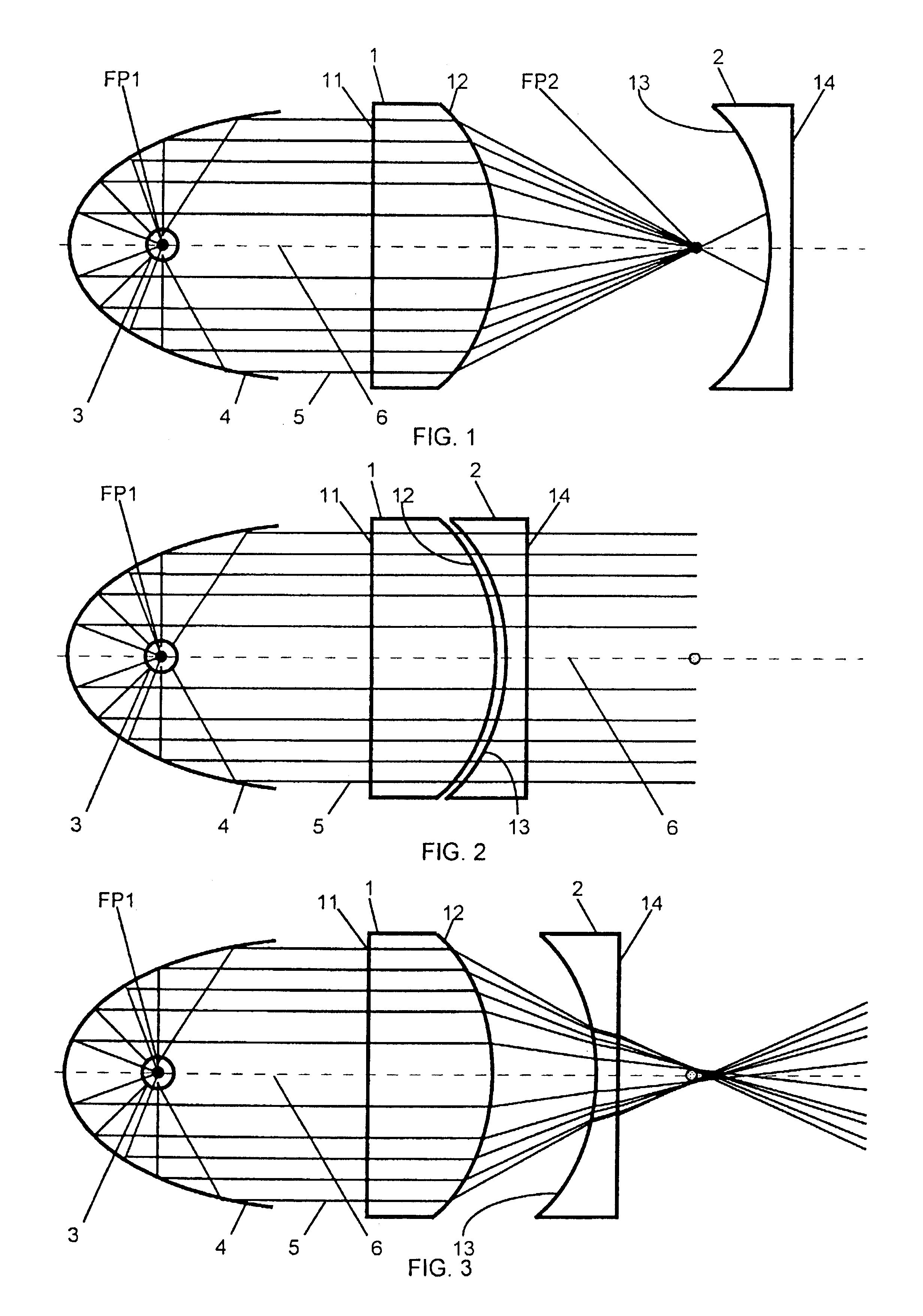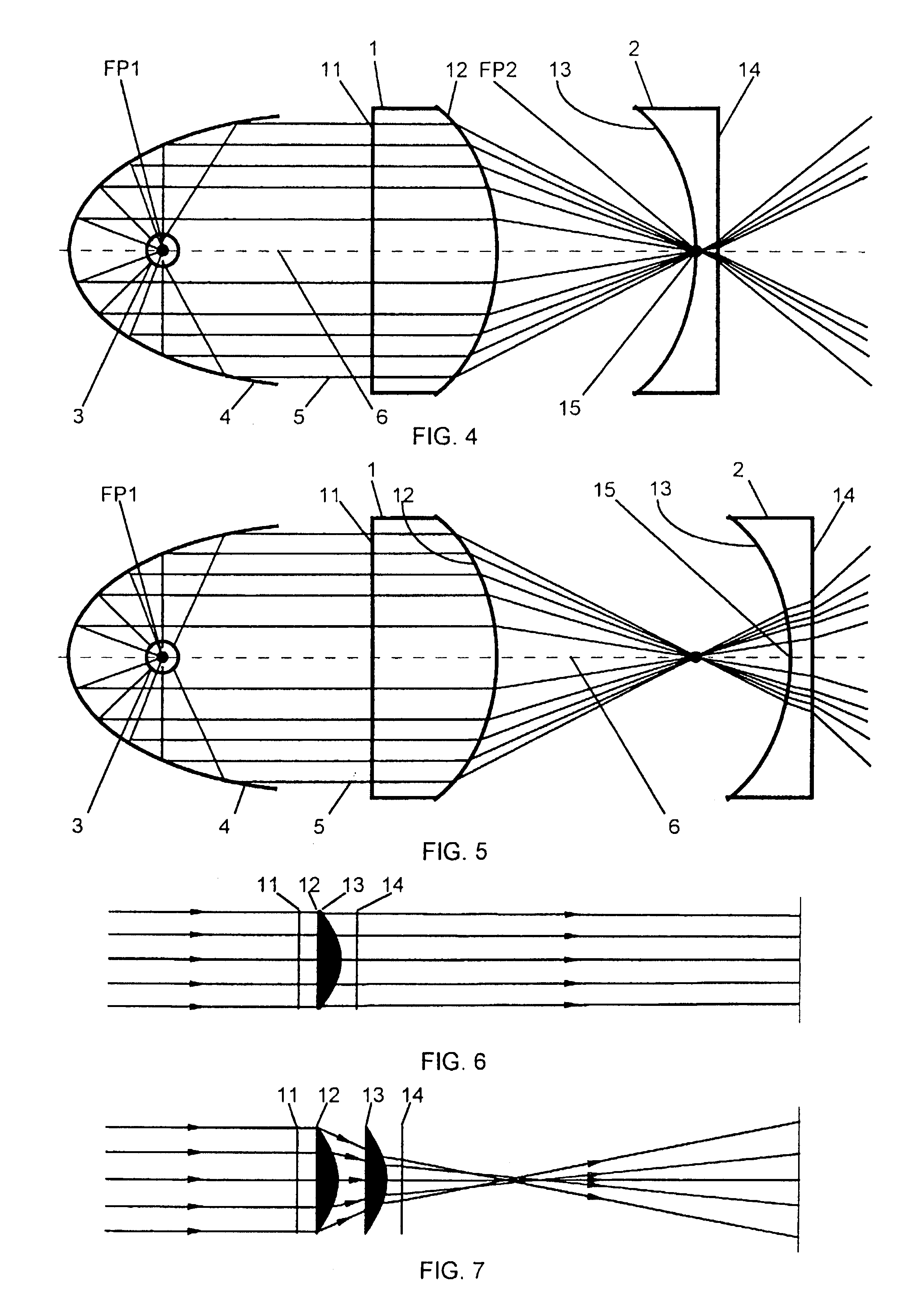Zoomable beamspreader with matched optical surfaces for non-imaging illumination applications
a beamspreader and optical surface technology, applied in lighting applications, lighting and heating apparatus, instruments, etc., can solve the problems of large system and many inches of travel
- Summary
- Abstract
- Description
- Claims
- Application Information
AI Technical Summary
Benefits of technology
Problems solved by technology
Method used
Image
Examples
Embodiment Construction
[0018]The operative concepts of an illumination optical system according to the present invention are described with reference to FIGS. 1-5. A first, plano-convex, lens 1 and a second, plano-concave, lens 2 are mounted coaxially with a lamp 3 and a reflector 4 forming a light beam 5 having an optical axis 6. The reflector is preferably parabolic and the lamp is preferably located at or near the focus FP1 of the parabola so that the resultant light beam is substantially collimated. Practically, however, the light beam will have a small angle of divergence of perhaps four or five degrees. The light beam is incident upon the planar surface 11 of the first lens and is refracted when passing through the convex surface thereof. The convex surface 12 of the first lens has a positive optical power and faces towards the concave surface 13 of the second lens, which has a negative optical power, and the two curved surfaces have matching shapes with equal but opposite optical powers. The shape ...
PUM
 Login to View More
Login to View More Abstract
Description
Claims
Application Information
 Login to View More
Login to View More - R&D
- Intellectual Property
- Life Sciences
- Materials
- Tech Scout
- Unparalleled Data Quality
- Higher Quality Content
- 60% Fewer Hallucinations
Browse by: Latest US Patents, China's latest patents, Technical Efficacy Thesaurus, Application Domain, Technology Topic, Popular Technical Reports.
© 2025 PatSnap. All rights reserved.Legal|Privacy policy|Modern Slavery Act Transparency Statement|Sitemap|About US| Contact US: help@patsnap.com



